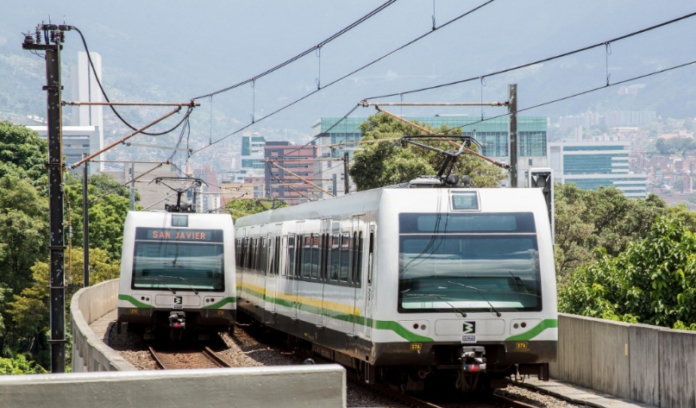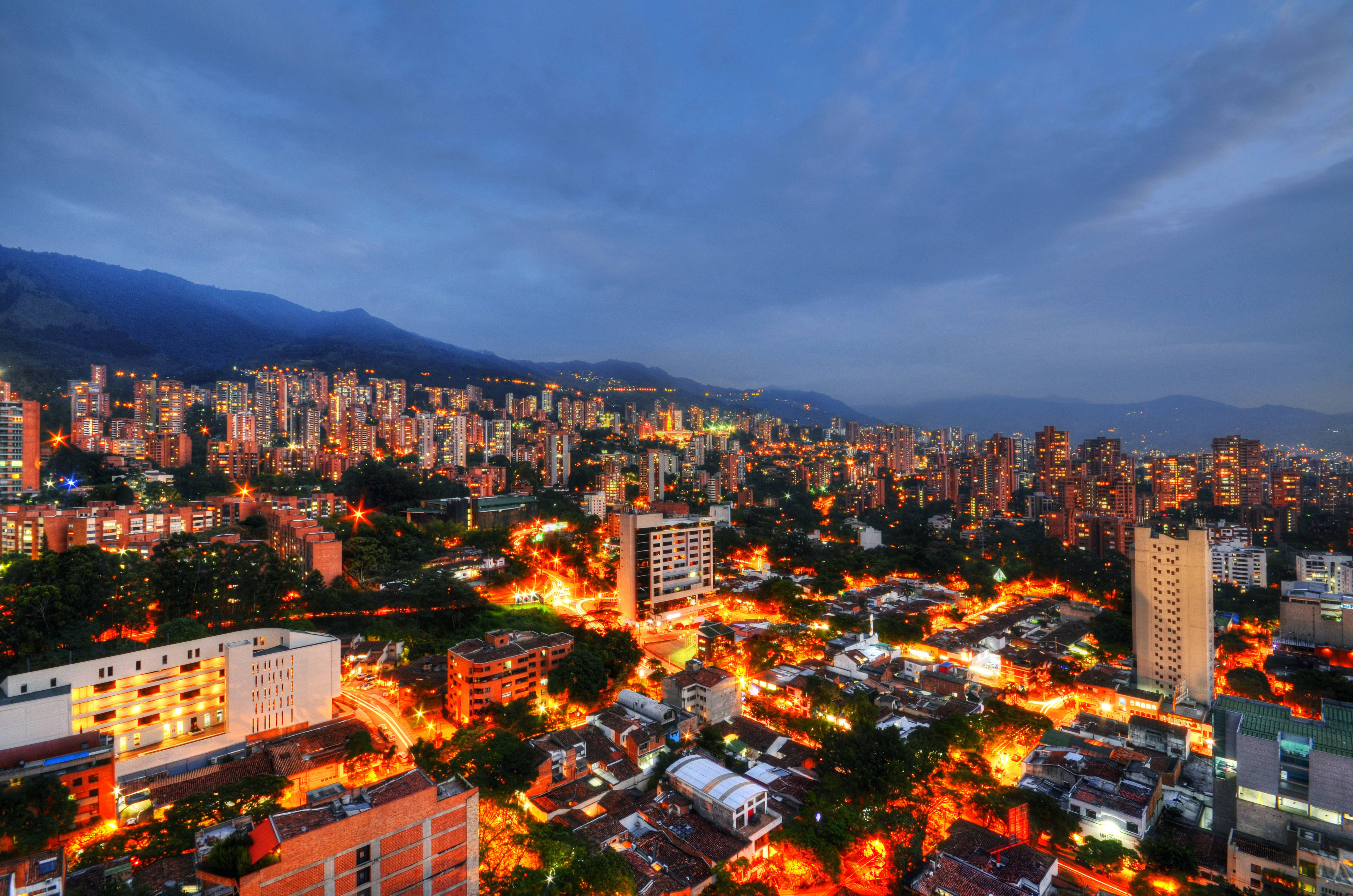Following on from our Metro guide, here’s extra updated information and tips for Medelliín transport 2019:
Peak hours
Considering how hundreds of thousands of people take the metro in Medellín every day, it’s no surprise that the trains get very crowded during peak hours. Monday to Friday in the morning, from 5 am to 8 am, and the evenings, from 4 pm to 7 pm are the busiest times as people commute to and from work. During these periods, do not expect to get a seat, and do expect to be firmly packed into the carriages.
If you can’t avoid traveling at these times, try to board the train from the end of the platform (it’s sometimes quieter) and aim to stand close to the door when you board (you may have to get off and on again at each station to allow people to pass by). Remember to bring water with you on hot days to stay hydrated too.

Using the metro across the weekend tends to be calmer, although crowds vary depending on the station you travel from – for example, San Antonio is often busy as it connects the two metro lines and is located in El Centro. Large events such as the Feria de Flores, music festivals and soccer games definitely increase the number of people taking the metro, so give yourself plenty of time in advance to arrive.

Metrocable
One of the newer parts of the metro system, the Metrocable is a network of cable cars (or gondolas) that connect the metro train stations to urban areas in remote parts of the city. The idea behind the metrocable was to help people living in the hills and poorer neighborhoods have greater mobility. It’s also an incredible way to see Medellín’s landscape, boasting far-reaching views of the city and the valley.

In total, there are five metrocable lines that extend 1,187 kilometers.
Linea H: From Oriente tranvía station to Villa Sierra
Linea J: From San Javier metro station to La Aurora
Linea K: From Acevedo metro station to Santo Domingo
Linea L: From Santo Domingo metro station to Parque Arví (there’s an additional cost of $6,000 COP for this journey. Residents of Estrato 1, 2 or 3 pay less)
Linea M: From Miraflores tranvía station to Trece de Noviembre

Metroplús
A combination of the metro, tram and bus, the Metroplús is a great alternative to get around in Medellín. Faster than buses, more flexible than trams and more efficient than its counterpart in Bogotá (the Transmilenio), the Metroplús follows specific routes via its own streets and designated tunnels and bridges. There are two lines and 28 stations for the Metroplús, collectively stretching over 26 kilometers.
Line 1 and 2 both begin in Belén at Universidad de Medellín and end in Parque Aranjuez, however, line 1 covers 21 stations while line 2 has 24 and goes along the west side of Medellín. The Metroplús system is integrated with five metrocable lines, one tranvía line, two metro lines (A and B) and users can change between the connected transport lines without an additional fee.

Safety tips
Traveling on the metro is generally very safe, and locals and foreigners alike take it on a daily basis to easily navigate their way through Medellín. That said, the most common threat on the metro is pickpocketing. Whenever traveling via the metro ensure that you don’t have any valuables on display and wear your backpack on your front or hold your arm over the zip/opening points. It’s also worth not putting your phone, house keys, wallet etc. in the front pocket of your bag – many thieves are able to open these parts without you feeling any movement.
Additionally, as an extranjero, you are more likely to be a target for petty crime. When on the metro, be conscious not to draw attention to yourself by speaking loudly in another language or showing money and expensive items. If you’re worried you’ve taken the wrong train or feel lost, it’s best not to look visibly disoriented. Remember to stay calm, ask a local if you’re confident speaking Spanish (approach a family if you’re nervous) or get off at the next station and ask a security guard or fellow foreigner.

Other general common-sense tips apply:
- Research where you’re going in advance and ensure the area around the station where you’re due to depart is safe
- Stay alert for people following you. If you suspect someone is following you, immediately head somewhere with other people (a shop, bar, even someone’s home) and alert the police
- If you’re traveling at night, go with a group and tell a person who is not with you what time you plan to be back
- Stand behind the yellow line on the platform when waiting for a train
Interesting facts
- Medellín was the first city in the world to use cable cars for mass transit
- The metro first opened on November 30, 1995, and has faced little to no vandalism since
- The metrocable was first implemented in 2004
- There are two metro train lines: line A – 23.3 km long, and line B – 5.6 km long
- The metro system has 76 stations: 27 for trains, 11 for cables, 9 for trams and 28 for the Metroplús
- Bello, Medellín, Itagüi, Envigado, Sabaneta and La Estrella all have integrated metro access
- The metro has mobilized more than two billion journeys since being constructed
- It is the only metro system in all of Colombia
- Medellín’s government claims “Metro Culture is the product of a social and educational management model that Metro de Medellin has built, consolidated and delivered to the city”












